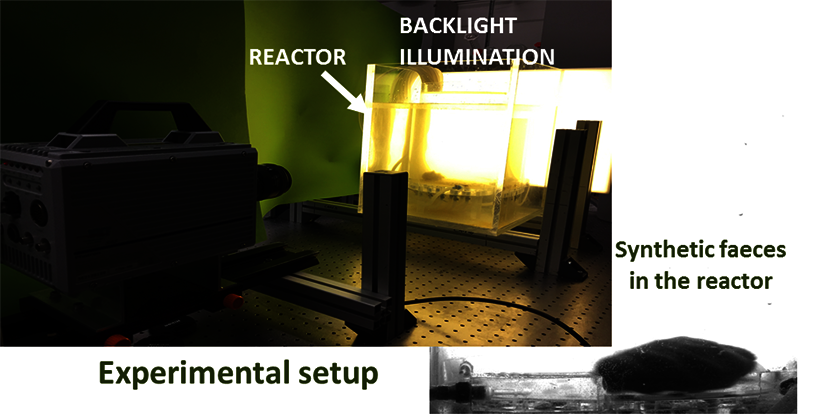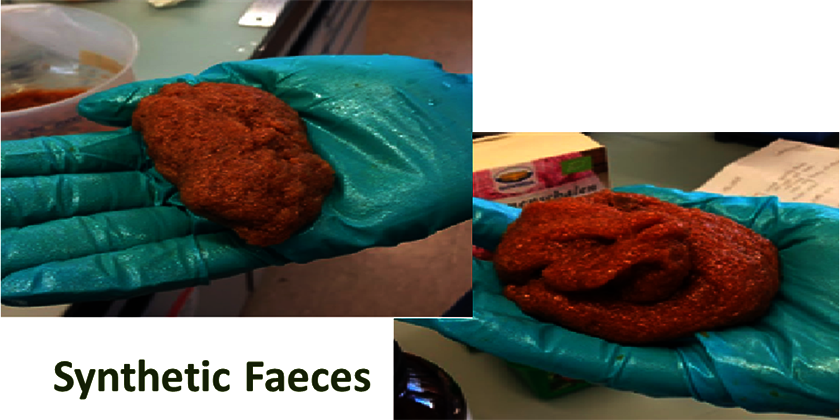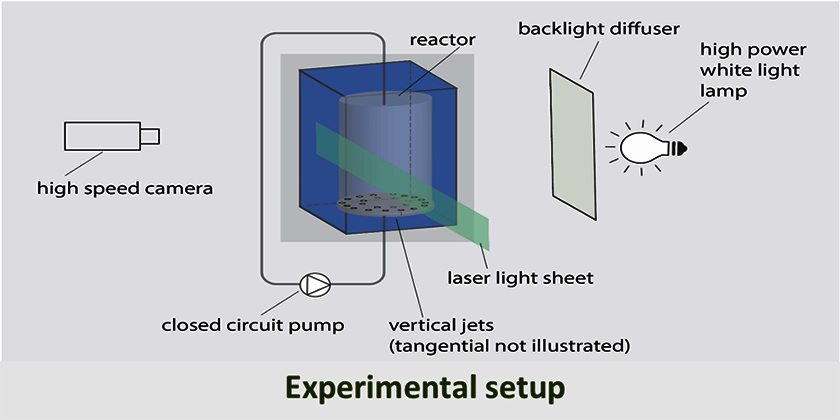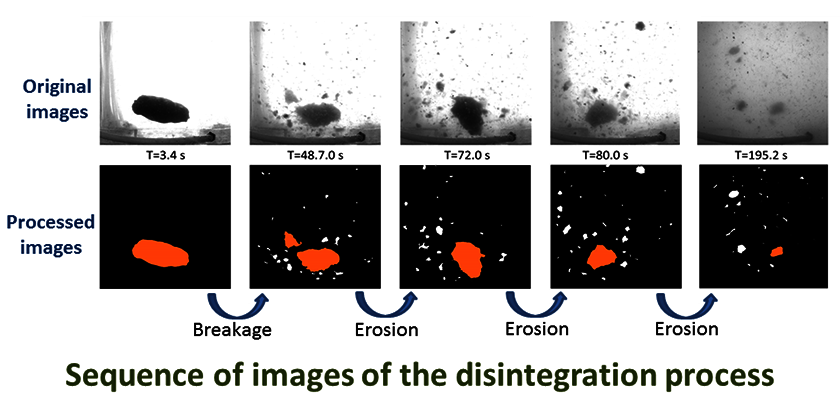Department Urban Water Management
Quantifying physical disintegration of faeces in sewers: stochastic model and flow reactor experiments
Our understanding of gross solids (GS) transport, sedimentation, and disintegration in sewer systems is still rudimentary despite its importance for the design and maintenance of these systems. Sedimentation of GS can cause maintenance problems such as blockages and the formation of dangerous gases such as hydrogen sulphide. The prevalence of these phenomena can increase with decreased wastewater flows. This is an expected situation in many existing systems in the world due to changes in population size and/or as result of desired water saving measures. Quantification of GSs fate (movement, sedimentation and disintegration) in sewer systems provides the means to prevent such undesirable phenomena. Some models predicting GS transport in sewers can be found in the literature. However, only very limited studies focused on their disintegration. Moreover, none focused on the physical disintegration of faeces, which together with toilet paper, represent the largest mass stored in sewers during dry weather.
We aim to develop a model for quantifying the physical disintegration of faeces under varying turbulent flow conditions. Stochasticity shall be added to the model to overcome the randomness introduced by the high variability in sewer flow regime and in the characteristics of the discharged solids.
For model calibration a unique experimental setup shall be developed. To overcome the high variability in faeces characteristics, synthetic faeces shall be developed and used in the experiments for model calibration. Real faeces shall be collected for model validation. Experiments shall be held in a reactor with controlled turbulent flows, to overcome the high variability in sewer flow regime.
A high speed camera will enable monitoring of solids physical disintegration. Image analysis of breakage experiments obtained under backlight illumination will allow to determine the evolution of the solids’ size over time. Particle image velocimetry (PIV) will enable the characterization of the flow field in the reactor. PIV is based on the observation of tracer particles seeded into the water.
An outcome of this project will be a stochastic novel faeces disintegration model that can potentially be integrated in sewer models predicting solids movement. Simulating such a model for sewer systems in which their input flows are reduced can support detection of hot spots for solids accumulation which can cause operational problems such as blockages and formation of toxic gas.






